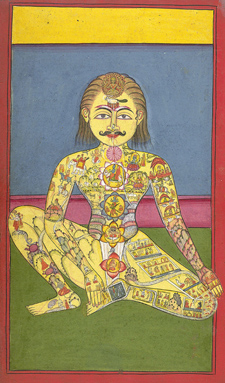
Apollo suit. NASA photo, Public Domain
The Novermber, 2013 issue of The Smithsonian Magazine is devoted to 101 things that made America. The magazine lists 33 contributors who chose these items from among the 137 million artifacts housed in 19 Smithsonian museums and research centers.
Animals, vegetables, and minerals are represented, and the objects chosen evoke the range of both light and dark aspects of our history. The opening photograph of a stuffed buffalo is as sad as it is iconic, and the inclusion of the Enola Gay, the plane that dropped the first atom bomb, reminds us that weapons of mass destruction are part of what made us what we are.
The chosen artifacts include:
– The Lewis and Clark Compass (1804). At a cost of $5, it wasn’t cheap, but it survived the 7,000 mile trip.
– A California Gold Nugget (1848)
– Polio Vaccine (1952)
– Abraham Lincoln’s Stovepipe Hat (1865)
– Barbie Doll (1959)

Edison Light Bulb. Public Domain.
– Louis Armstrong’s Trumpet (1946)
– Glass Shards from the Birmingham Church Bombing (1963). Barely a month after Dr. King’s “I Have a Dream,” speech, a bomb blast killed four African-American girls at their sunday school. Outrage over the murder of children at church lent a powerful impetus to the civil rights movement.
– Birth Control Pills (1965)
– The original, tattered Star Spangled Banner that flew over Fort McHenry during the War of 1812 and inspired Francis Scott Keys to compose the national anthem.
– Table and Chairs from Appomattox Court House, where General Lee surrendered to General Grant to end the Civil War (1865)
– The Model T Ford (1913)
– Section of a California Costal Redwood tree.
– Passenger Pigeons: Once there were billions of these birds, but 19th century communities slaughtered them to bake in pigeon pies. The last surviving bird died in 1914 and is stuffed in the Smithsonian.
– The Eniac Computer (1945). I would have chosen an Apple IIE, or even a TRS-80, since it was personal computers, not this behemoth, that changed the world.

Geronimo, 1887. Public Domain
This photograph of Geronimo, taken in 1887. The previous year, Geronimo surrendered his small band and was transported from his beloved Arizona to Florida. He spent the rest of his life in federal prison, though in 1905 he was brought out to ride in the inaugural parade of Theodore Roosevelt. His request to the president to return to his home was denied. On his deathbed in 1909, he reportedly said, “I should have fought until I was the last man alive.”
– Levi’s Jeans (1873)
– Singer Sewing Machine (1851)
– The Colt Revolver (1839)
– Alexander Graham Bell’s Telephone (1876)
– Wright Brothers’ Airplane (1903)
– The Huey Helicopter (1966). Think of the “Ride of the Valkyries” scene in Apocalypse Now
– Section of the Aids Quilt (1987)
– The first Kodak camera (1888)
– Stage Coach (1851). I would have included a covered wagon.
– The Teddy Bear (1903). During a hunting trip in Mississippi, President Theodore Roosevelt refused to shoot a bear that guides had tied to a tree. This inspired a political cartoon which featured a wide-eyed cub, and led to the toy that is still found in millions of nurseries.

Vintage Teddy Bear by David Crane, 2003, CC BY-SA-2.0
– Ruby Slippers – the ones that Judy Garland wore to take us home in the 1938 Wizard of Oz.
– R2D2 (1983). Here’s the fun story from the Smithsonian Magazine: when filmmaker, George Lucas was finishing production of American Graffiti, the sound designer called for “R2-D2,” which meant, “Reel 2, Dialogue 2.” Lucas, who was already working on Star Wars, said, “What a great name!”
***
This is just a partial list. You can see all the choices on the website. No two people are likely to agree on all the artifacts. What do you think is missing? Which items should be dropped? And for those who live in other countries, what are some of your key artifacts and their stories?

















